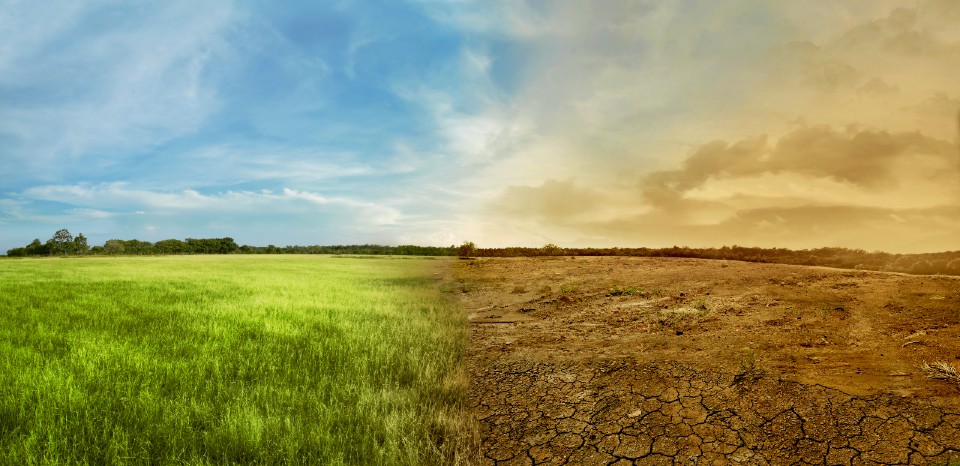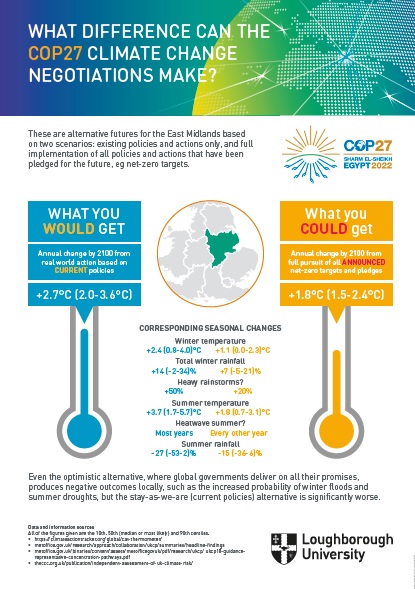Dr Richard Hodgkins examines two separate scenarios: “What you would get” and “What you could get”.
He reveals the weather and temperatures that are likely to be experienced in 2100 if current policies continue, and how this may change if full action is taken to tackle climate change.
“All in all, even the optimistic alternative, where global governments deliver on all their promises, produces negative outcomes locally, such as the increased probability of winter floods and summer droughts, but the stay-as-we-are (current policies) alternative is significantly worse”, commented Dr Hodgkins.
“The average British child born today will be alive in 2100 to experience these outcomes, and their impacts on transport disruption, droughts, and floods, the availability and cost of food, and many other aspects of their daily lives.
“Even though the prospect of meeting the COP21 Paris Agreement target (of holding warming at a global average of 1.5C) seems remote, the gains from avoiding 2ᵒC, 3ᵒC, 4ᵒC, or even more warming can be measured in benefits to the lives of billions, who could be spared merciless heatwaves, long droughts, crumbling coastlines, hunger, migration and conflict – if the right choices are made today.”
The free infographic can be downloaded by clicking: cop-27-infographic.pdf. Dr Hodgkins breaks down the information in the graphic below.
What you would get
Judging from real-world action based only on current policies, the annual change by 2100 would be that the overall temperature would be 2.7ᵒC warmer, says Dr Hodgkins.
Additionally, this scenario also accounts for the corresponding seasonal changes: Winter temperatures would increase by 2.4ᵒC, with total winter rainfall increasing by around 14%. Chances of heavy rainstorms would increase by 50%.
As for changes in the summer, the overall temperature would increase by 3.7ᵒC, with chances of summer rainfall decreasing by 27%. Finally, the East Midlands would experience heatwaves in the summer during most years.
What you could get
In contrast from the less favourable scenario, if we were to estimate the annual change by 2100 based on full pursuit of all announces policies and net-zero targets, the temperature would only increase by 1.8ᵒC.
Furthermore, the corresponding seasonal changes would also be affected by this shift in scenarios: winter temperatures would increase by 1.1ᵒC, with only a 7% increase in winter rainfall. Chances of heavy rainstorms would rise by 20%.
Moreover, summer temperatures would increase only by 1.8ᵒC, with a decrease of 15% in summer rainfall. Lastly, the East Midlands would experience heatwaves in the summer only every other year.

